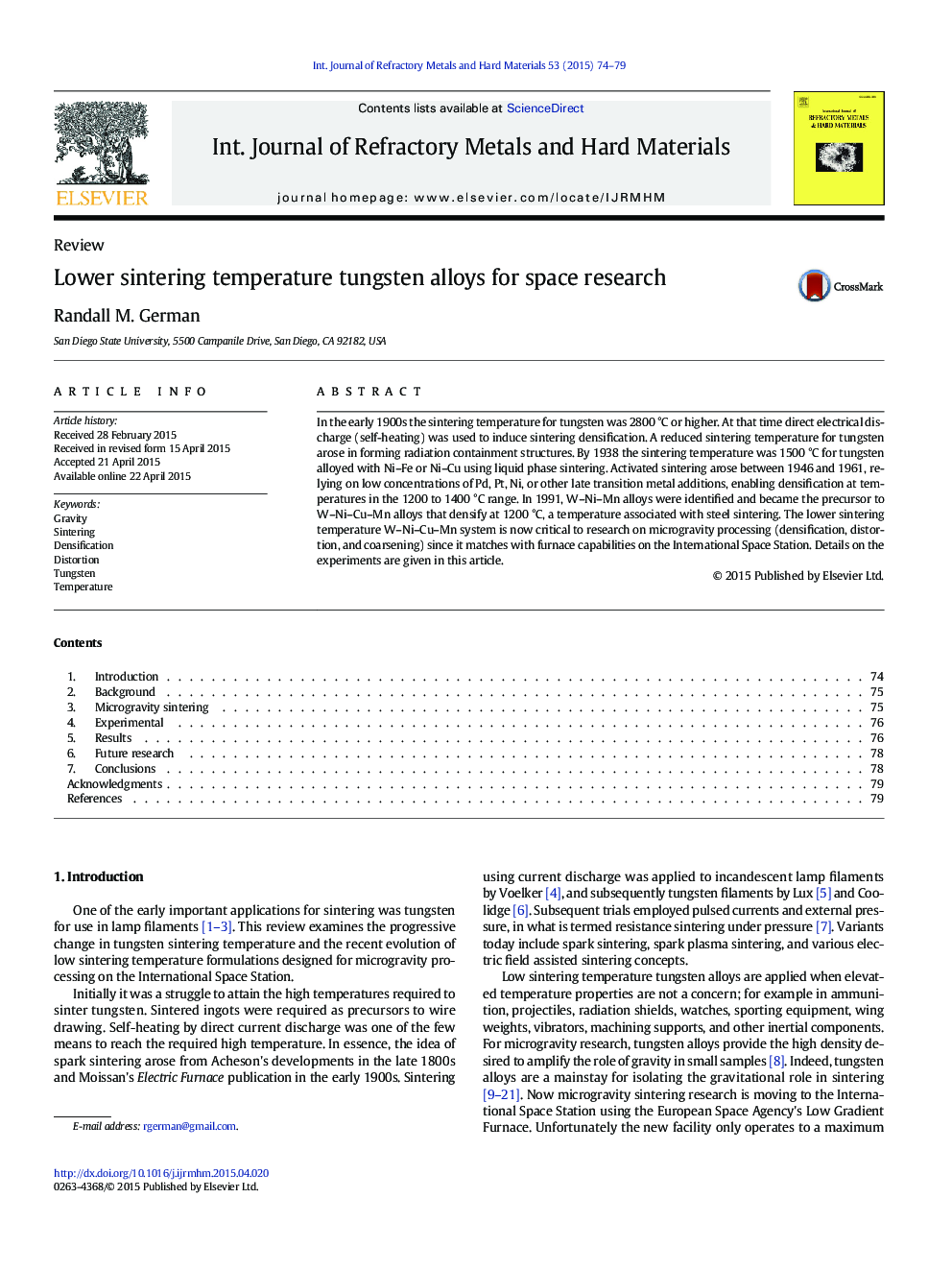| Article ID | Journal | Published Year | Pages | File Type |
|---|---|---|---|---|
| 1602912 | International Journal of Refractory Metals and Hard Materials | 2015 | 6 Pages |
•Over the past century the sintering temperature for tungsten-based compositions has declined from 2500 °C to now 1200 °C.•Initially direct electrical discharge or spark sintering was used to induce densification.•Now W–Ni–Cu–Mn alloys enable sintering at temperatures similar to steel sintering.•Such lower sintering temperature systems are critical to research on microgravity processing (densification, distortion, and coarsening) to match with capabilities on the International Space Station.•Trials with the new tungsten alloy are described as well as the sample preparation required to afford significant processing flexibility to adjust dihedral angle, solid:liquid ratio, and hold time up to one hour, with parallel ground-based and microgravity-based processing.•The sample preparation, qualification tests, and planned experiments are detailed.
In the early 1900s the sintering temperature for tungsten was 2800 °C or higher. At that time direct electrical discharge (self-heating) was used to induce sintering densification. A reduced sintering temperature for tungsten arose in forming radiation containment structures. By 1938 the sintering temperature was 1500 °C for tungsten alloyed with Ni–Fe or Ni–Cu using liquid phase sintering. Activated sintering arose between 1946 and 1961, relying on low concentrations of Pd, Pt, Ni, or other late transition metal additions, enabling densification at temperatures in the 1200 to 1400 °C range. In 1991, W–Ni–Mn alloys were identified and became the precursor to W–Ni–Cu–Mn alloys that densify at 1200 °C, a temperature associated with steel sintering. The lower sintering temperature W–Ni–Cu–Mn system is now critical to research on microgravity processing (densification, distortion, and coarsening) since it matches with furnace capabilities on the International Space Station. Details on the experiments are given in this article.
Graphical abstractLimitations on microgravity sintering temperatures are being accommodated by new tungsten alloys capable of densification and distortion studies using lower sintering temperatures. These systems result in 1200 °C near dense structures and are designed for critical microgravity studies on the International Space Station. The plot shows the heating and cooling melting behavior of the matrix for this novel tungsten alloy required to conduct the experiments.Figure optionsDownload full-size imageDownload as PowerPoint slide
